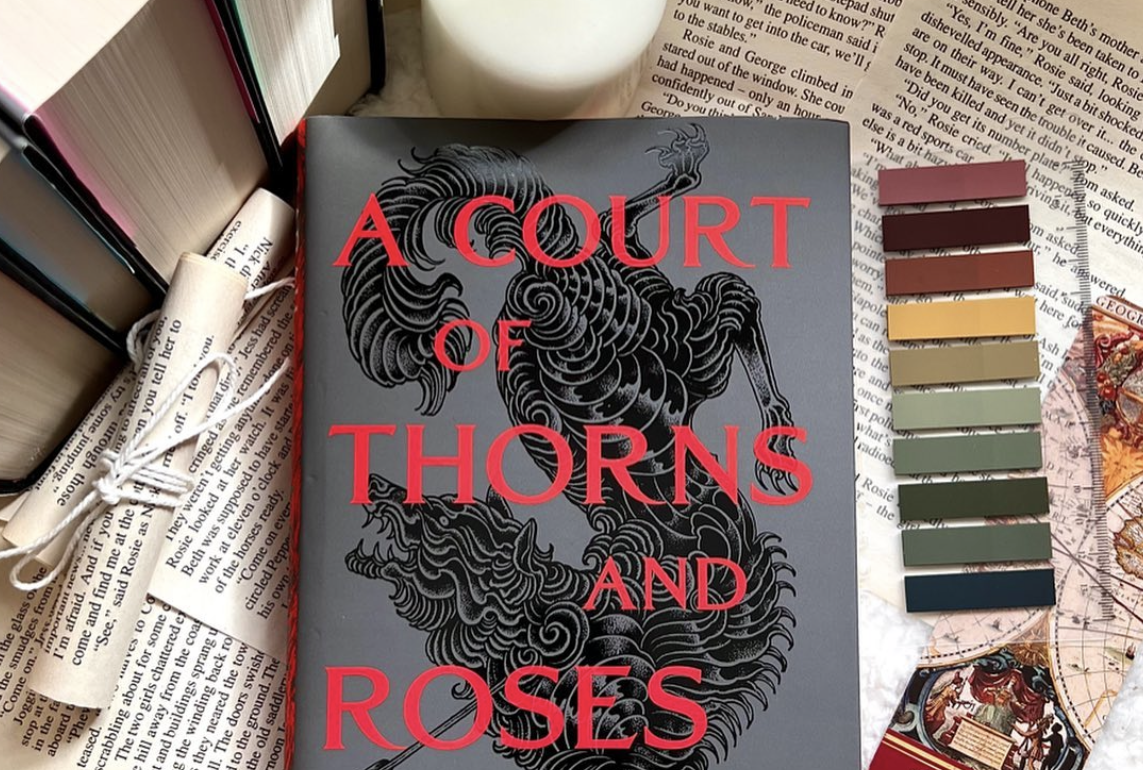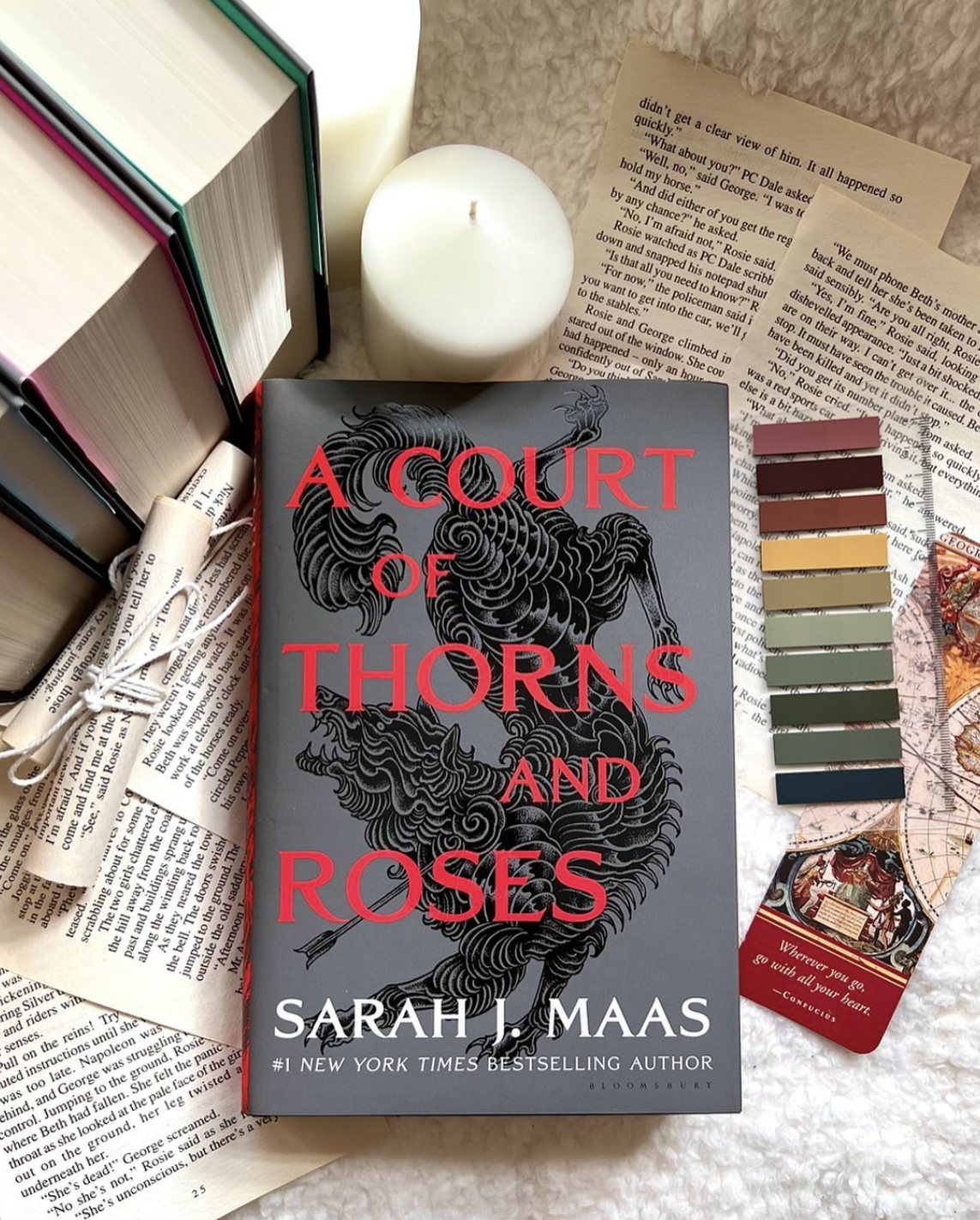Content warning: mentions of violence and abusive relationships in literature.
A brief scroll through Goodreads, a well-loved website dedicated to tracking and rating novels, reveals a community of fans for even the most obscure of sub-genres. Goodreads’ ‘list’ function – where users compile lists of books by genre, theme, archetype or trope – allows like-minded readers to unearth books on topics of interest. The lists range from generic (see ‘Greatest books of all time’) to so specific that only a person attempting to cook historically accurate meals from Imperial Rome would click.
Though there is a list for everything, the most popular genre for compilation is undoubtedly Young Adult Fantasy. YA fantasy aims to distill the chaos of youth and reflect it onto a tapestry of uncharted, unimagined worlds. I make no secret of my love for YA Fantasy, and while scrolling Goodreads for my next book, found a list intriguingly titled ‘Dark Princes’. The accompanying comment followed:
‘[What every girl truly wants] is her own dark prince. This is my compiled list of books whose male characters are a misunderstood lead, a black sheep who turns out [to be good in the end. After finishing these books, we end up liking – if not loving – these dark princes and wishing they would end up with the heroines].’
The list was full of books featuring tragic anti-heroes who, despite torturing, humiliating and killing their way through the novel, somehow end up winning the redeeming love of the beautiful young heroine and assuming the mantle of certified Good Guy. This list struck a question in me; why is the archetype of the Dark Prince so attractive, and what does it spell for the audience so enthralled by its morally gray material?
By drawing on examples from two popular novels The Cruel Prince and A Court of Thorns and Roses, I set out to trace the archetype of the Dark Prince back to the Romantic figure of the Byronic Hero and even further back, still, to the classic myths of Hades and Satan himself. Ultimately, I believe that the Dark Prince exists as a contemporary echo of the well-worn Byronic stock character and has been powered into modernity by the desires of young female-identifying readers.
First, we must define the Dark Prince as an archetype and understand his mythological origins. Though no official definition exists, I understand the Dark Prince to be a brooding, attractive, powerful, snarky and – most importantly – redeemable character who exists as the antithesis of the heroine’s conventionally ‘good’ qualities. For each ounce of bravery and kindness the leading lady possesses, the Prince must match her in trauma, treachery and taunts. It is imperative that the Prince be not only exceedingly attractive but desirable to the main character; he initially acts as the serpent to Eve, tempting her down a path of seduction and power, testing the limits of her morality. However, upon cracking his hardened exterior, the heroine learns that the Dark Prince is not only deeply emotional but troubled, thoughtful and profoundly worthy of her love.
In Holly Black’s The Cruel Prince, human Jude lives in Faerie with her sisters and adoptive father. Her school bully, the beautiful and impervious Prince Cardan, is youngest son to the reigning fae king. Cardan goes out of his way to make Jude’s life hell; forcing her to strip naked in front of her classmates after magically drugging her, constantly belittling her ambitions to become a knight, betraying her confidence and nearly causing her death. Yet beyond his cruelty, Cardan’s apparent hatred for Jude masks a deep longing. While infiltrating his manor house, Jude finds a piece of paper covered in her name, scrawled thousands and thousands of times by the boy-prince’s feverish hand. This, while creepy, spurs Jude to reconsider his apparent hatred and eventually return his affections.
Similarly, in A Court of Thorns and Roses, powerful fae lord Rhysand delights in playing games with human Feyre – even going so far as to kidnap her, trap her in a magical bond and force her to spend months with him at his palace like another famous Dark Prince. Despite his cruelty, Rhysand ultimately admits that he is in love with Feyre and has been from the moment they met. In fact, it is soon revealed that they are ‘mates’. Maybe it’s just the Australian in me, but hearing mate in a romantic context sort of kills the mood.
Nevertheless, Cardan and Rhysand both slot into the archetype of the Dark Prince with ease; they are powerful, seductive and callous men who, by virtue of their love for the main character, end the novel redeemed in both the eyes of the heroine and the reader.
Likewise, the figure of the Byronic Hero echoes the Dark Prince’s gloomy, secretive and romantic tendencies. The Byronic Hero is easier to define; a rebel, a lover, a loner lacking in quintessential heroic virtue but magnetic nonetheless (Marin, 2008). As gothic literature professor Wendy Fall writes, ‘Byronic heroes are arrogant, intelligent, educated outcasts, who somehow balance their cynicism and self-destructive tendencies with a mysterious attraction, particularly for heroines.’ (Fall, 2021).
One only has to flip through a Brontë novel to see the Byronic hero in action; callous Heathcliff loving only Cathy, cold Mr. Rochester hiding a terrible secret in the attic while falling for naive Jane. The Byronic hero exists as a wishful dream for readers, allowing them to step briefly into a world where love and passion are the ultimate cures for evil.
With Cardan and Rhysand as the modern Dark Princes, Heathcliff and Mr. Rochester as the Byronic blueprints, the question arises; who was the original? The obvious answer is Hades, dark god of the Underworld who condemned pure Persephone to a fate of darkness simply because he could not bear to be without her. However, the answer may lay in a different offshoot of myth altogether. It is my belief that the original Dark Prince is none other than Lucifer; a misunderstood angel who fell from heaven for loving too much, for being too proud.
In a comparison between Dante’s Inferno and Byron’s problematic protagonists, Zerafa writes ‘Satan in Paradise Lost, though evil, attracts the reader who in turn is able to sympathise with the demon and his struggles. How can one feel sympathy for the devil?’ If the modern Dark Prince and classic Byronic hero is anything, it is this: a sympathetic devil.
Now that we understand who the Dark Prince is and where he came from, we must ask about his audience. Who are the people consuming this modern archetype, and what does the Prince say about them? Moreover, what effect will the Prince have on his overly young demographic?
First, we must acknowledge that the Dark Prince – and the YA fantasy genre at large – is primarily a female-oriented phenomena. In 2014, 60.5 percent of all young adult books sold were purchased by women and 39.5 percent were bought by men. Likewise, on NPR’s Best Teen Novels List, 63% of the top 100 books were written by women. It is fair to extrapolate, then, that it is primarily women-identifying people reading and writing about the archetype. Indeed, I would argue that the Dark Prince exists for, and because of, women. The Prince acts as fantastical wish fulfillment, as literary fan service; through the eyes of the heroine and the romantic female gaze, readers can experience the kind of mythological, passionate, world-altering love that we are all taught to crave. Unfortunately, in the Dark Prince’s case, this love is also often unkind and – in some cases – violent.
The Dark Prince teaches young female readers that all manner of violence can be accepted in a partner if only he feels anguish and regret after. After Rhysand kidnaps Feyre and forces her to spend weeks at his palace, he reveals that he only did this to save her from depression and a toxic marriage. Thus, he is redeemed.
After Cardan drugs Jude with a magic apple, makes her strip bare and kiss his feet for amusement, he secretly pricks her finger with the knowledge that when she tastes the blood, the enchantment will lift. This act of mercy, along with the shame and desire Jude sees in his eyes while he humiliates her, redeems Cardan of all wrongdoings.
The Dark Prince teaches passion, yes, but also aggression and possession. By laying claim to the young heroines and treating them as they wish, disregarding the silly notion of consent, the Dark Prince plants a dangerous idea in the minds of young readers. He teaches that women can accept all manner of horrors if only to fix the perpetrator. Beth Younger writes that, ‘YA literature is an important source of cultural information for young readers in that it portrays adolescents negotiating the social and sexual standards of the dominant culture. Young people are influence by the books they read. They need literature that will help them develop into healthy adults’ (Younger, 2009; Wolford, 2010). As exciting as it may be to root for the broken Byronic Prince, we must question the lessons that linger long after the cover of a book falls shut.
Article written by Claudia Weiskopf
With references from:
Blessing. (2016). Dark Princes | Goodreads.
Dahl, M. (2014, June 8). The Dudes Who Read Young-Adult Fiction. The Cut.
Fall, W. (2021). Glossary of the Gothic; Byronic Hero. Marquette University.
Lewit, M. (2012). Why Do Female Authors Dominate Young-Adult Fiction? The Atlantic.
Magic Writer. (2017). What is Young Adult Fantasy?
Marin, C. G. (2008). The Byronic Hero. 81-86. Contemporary Literary, Linguistic and Didactic Studies Centre, Pitesti University Press.
Wolford, T. (2010). Maidens or Warriors: Women’s roles in current young adult fantasy literature. University of North Carolina.
Younger, B. (2009). Learning curves: body image and female sexuality in young adult literature. The Scarecrow Press Inc.
Zerafa, L. R. (2013). Beyond hero and villain: Milton’s portrayal of Satan and Byron’s problematic protagonists. University of Malta.



